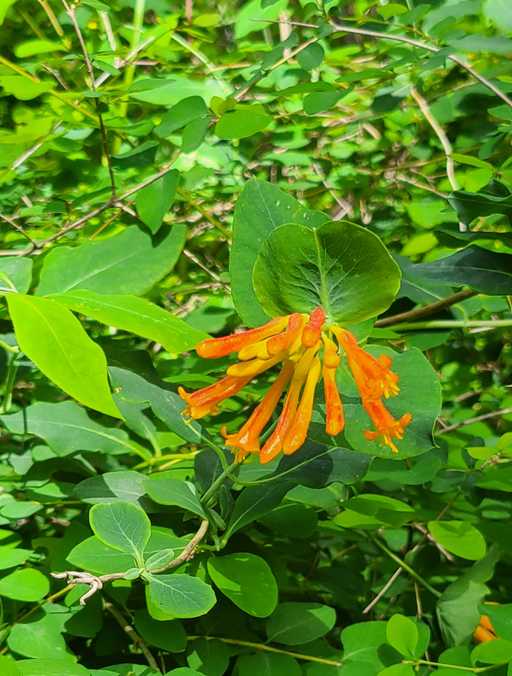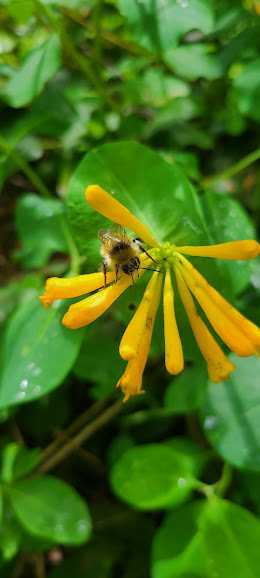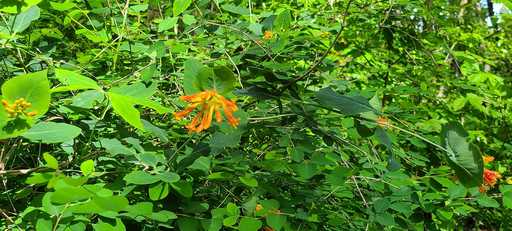Native Plant Spotlight - Orange Honeysuckle (Lonicera ciliosa)
What is Orange Honeysuckle?
Orange honeysuckle (Loincera ciliosa) is a native deciduous vine that grows in moist shady forests on the West Coast of North America. This native plant is a great alternative to many invasive vines that are commonly found in local nurseries. The honeysuckle can be identified by its opposite leaves that are fused together on the stem at the end of shoots. The plant produces bright orange flowers in May to July. The flowers are tube shaped and can attract many birds and pollinators. After flowering the plant will produce little green fruits that ripen to red.

Orange Honeysuckle as a Wildlife Plant
The bright orange flowers of the honeysuckle will attract pollinators such as butterflies and bees. They are also a favorite nector source for hummingbirds. The red fruits are also consumed by a variety of birds when ripened. The foliage of the plant can be eaten by a variety of wildlife including deer and elk.

Plant Growth Habits
The mature plant can reach 15 ft tall when climbing up trees. The plant will also grow over the ground if there is nothing to climb. The plant grows best in landscapes with part shade, but can tolerate sunnier or shadier locations. It also prefers moist soils but can tolerate dryer soils after it has established for a few years. It can be trained up fences or trees to add color and height in the garden. The plant can be pruned if the growth has become too wild for the garden. When pruning keep in mind that the flowers bloom off of previous years growth. If you are looking to add a colorful vine that attracts birds and wildlife consider using orange honeysuckle in your garden.
